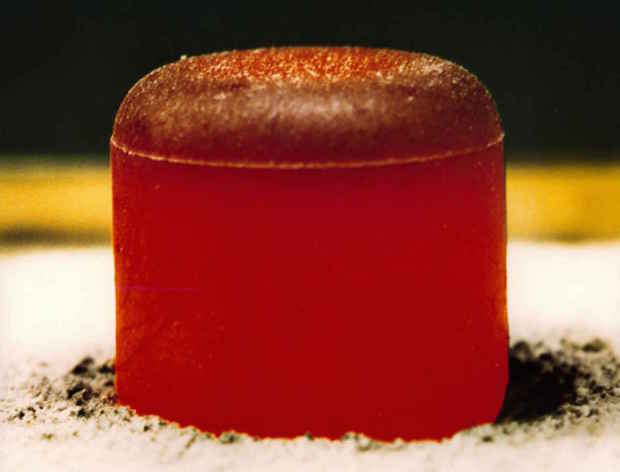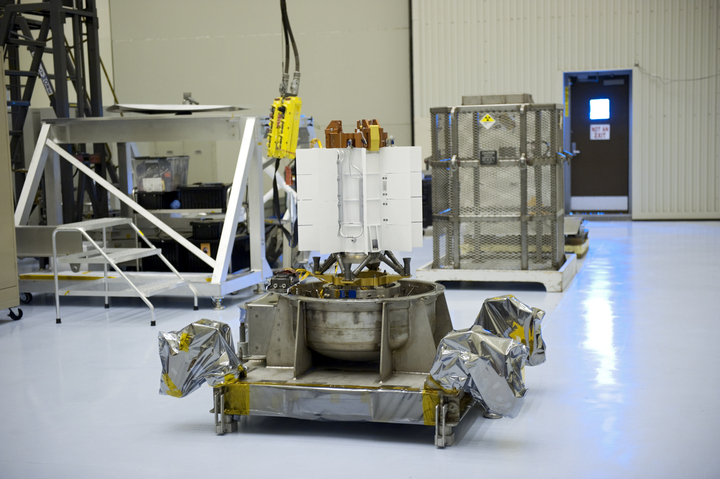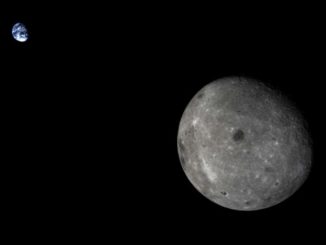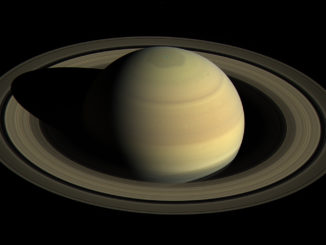
For the first time in nearly 30 years, the U.S. Department of Energy has produced a sample of plutonium-238, the radioactive isotope used to power deep space missions, good news for future NASA space probes heading to destinations starved of sunlight.
The 50-gram (0.1-pound) sample is a fraction of the plutonium needed to fuel one spacecraft power generator, but the Energy Department said the material represents the first end-to-end demonstration of plutonium-238 production in the United States since 1988.
The DOE made the new batch of plutonium-238 at Oak Ridge National Laboratory in Tennessee.
“This significant achievement by our team mates at DOE signals a new renaissance in the exploration of our solar system,” said John Grunsfeld, associate administrator for NASA’s science mission directorate, in a press release. “Radioisotope power systems are a key tool to power the next generation of planetary orbiters, landers and rovers in our quest to unravel the mysteries of the universe.”
NASA has spent more than $200 million maintaining the Energy Department’s infrastructure — and to pay for the resumption of plutonium-238 production — since 2012 in a bid to resolve a shortage that cramped the development of missions to visit the outer solar system and other destinations without stable sunlight.
Funding responsibility for the DOE’s plutonium-238 program shifted to NASA because the space agency is the primary user of the material. The government decided to restart plutonium production after purchases of the material from Russia ceased.
Nuclear-powered spacecraft transfer heat generated by the radioactive decay of plutonium-238 pellets into electricity. Plutonium power systems fly aboard NASA’s Curiosity Mars rover, the Cassini orbiter at Saturn and the New Horizons probe that encountered Pluto last year.
Researchers will analyze the new 50-gram sample — the approximate mass of a golf ball — for chemical purity and plutonium-238 content at Los Alamos National Laboratory in New Mexico, according to the Energy Department.
“Once we automate and scale up the process, the nation will have a long-range capability to produce radioisotope power systems such as those used by NASA for deep space exploration,” said Bob Wham, head of the plutonium-238 project for Oak Ridge National Laboratory’s Nuclear Security and Isotope Technology Division.

Nuclear scientists must artificially create plutonium-238 in a reactor because the isotope is not found in nature. Technicians take neptunium-237, an isotope with the same number of neutrons and one fewer proton, mix it with aluminum and crush it into tightly-packed pellets. A reactor at Oak Ridge fires neutrons at the pellets, irradiating the neptunium to generate plutonium-238.
“With this initial production of plutonium-238 oxide, we have demonstrated that our process works and we are ready to move on to the next phase of the mission,” Wham said.
The DOE says it can produce about 400 grams, or nearly a pound, of plutonium-238 per year beginning in 2019. The program’s goal is to eventually generate 1.5 kilograms, or 3.3 pounds, annually.
The Energy Department says it has 35 kilograms of plutonium, or 77 pounds, in its stockpile set aside for NASA missions. The material decays over time, losing its ability to help generate electricity, so only about half of the plutonium meets spacecraft standards.
“This is only sufficient to power two to three proposed NASA missions through the middle of the 2020s,” the DOE said in a press release. “Fortunately, the additional material that will be produced at ORNL can be blended with the existing portion that doesn’t meet specifications to extend the usable inventory.”
NASA’s next plutonium-powered space mission is the Mars 2020 rover, which is based on the design of the Curiosity mission currently exploring the red planet.
The Mars 2020 rover will use one nuclear power generator, called an MMRTG, which requires 4 kilograms, or 8.8 pounds, of plutonium. There is enough plutonium-238 in stock for that mission.
The space agency’s next flagship-class interplanetary probe after Mars 2020 will go to Jupiter’s moon Europa. Mission designers elected to use solar power for the Europa flyby spacecraft.
An infusion of fresh plutonium-238 into the DOE’s inventory could allow smaller NASA probes to use nuclear power systems, enabling more missions to the outer solar system at less cost.
Email the author.
Follow Stephen Clark on Twitter: @StephenClark1.



